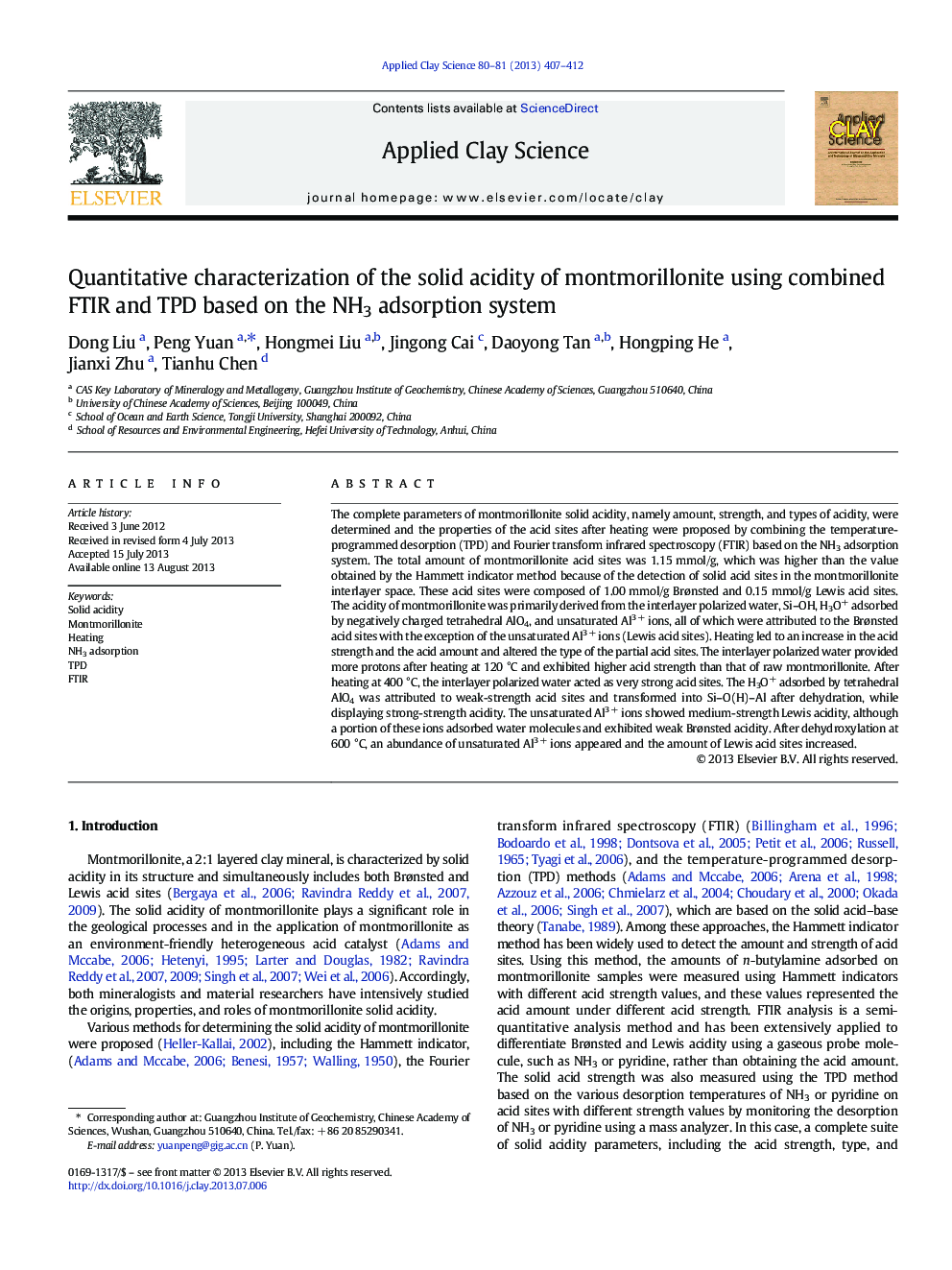| کد مقاله | کد نشریه | سال انتشار | مقاله انگلیسی | نسخه تمام متن |
|---|---|---|---|---|
| 8047564 | 1519092 | 2013 | 6 صفحه PDF | دانلود رایگان |
عنوان انگلیسی مقاله ISI
Quantitative characterization of the solid acidity of montmorillonite using combined FTIR and TPD based on the NH3 adsorption system
دانلود مقاله + سفارش ترجمه
دانلود مقاله ISI انگلیسی
رایگان برای ایرانیان
کلمات کلیدی
موضوعات مرتبط
مهندسی و علوم پایه
علوم زمین و سیارات
ژئوشیمی و پترولوژی
پیش نمایش صفحه اول مقاله

چکیده انگلیسی
The complete parameters of montmorillonite solid acidity, namely amount, strength, and types of acidity, were determined and the properties of the acid sites after heating were proposed by combining the temperature-programmed desorption (TPD) and Fourier transform infrared spectroscopy (FTIR) based on the NH3 adsorption system. The total amount of montmorillonite acid sites was 1.15 mmol/g, which was higher than the value obtained by the Hammett indicator method because of the detection of solid acid sites in the montmorillonite interlayer space. These acid sites were composed of 1.00 mmol/g Brønsted and 0.15 mmol/g Lewis acid sites. The acidity of montmorillonite was primarily derived from the interlayer polarized water, Si-OH, H3O+ adsorbed by negatively charged tetrahedral AlO4, and unsaturated Al3 + ions, all of which were attributed to the Brønsted acid sites with the exception of the unsaturated Al3 + ions (Lewis acid sites). Heating led to an increase in the acid strength and the acid amount and altered the type of the partial acid sites. The interlayer polarized water provided more protons after heating at 120 °C and exhibited higher acid strength than that of raw montmorillonite. After heating at 400 °C, the interlayer polarized water acted as very strong acid sites. The H3O+ adsorbed by tetrahedral AlO4 was attributed to weak-strength acid sites and transformed into Si-O(H)-Al after dehydration, while displaying strong-strength acidity. The unsaturated Al3 + ions showed medium-strength Lewis acidity, although a portion of these ions adsorbed water molecules and exhibited weak Brønsted acidity. After dehydroxylation at 600 °C, an abundance of unsaturated Al3 + ions appeared and the amount of Lewis acid sites increased.
ناشر
Database: Elsevier - ScienceDirect (ساینس دایرکت)
Journal: Applied Clay Science - Volumes 80â81, August 2013, Pages 407-412
Journal: Applied Clay Science - Volumes 80â81, August 2013, Pages 407-412
نویسندگان
Dong Liu, Peng Yuan, Hongmei Liu, Jingong Cai, Daoyong Tan, Hongping He, Jianxi Zhu, Tianhu Chen,